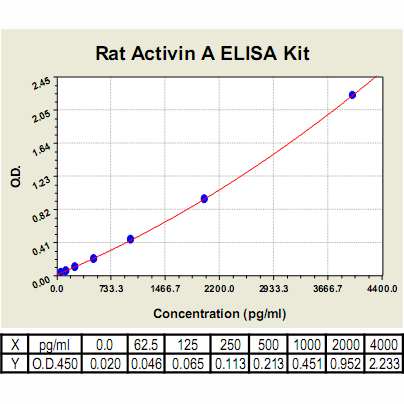Product Sheet CL0303
Description
BACKGROUND Activin, originally discovered as a polypeptide hormone that is capable of stimulating follicle-stimulating hormone secretion from pituitary cells in vitro, has recently been found to have a much wider range of biological activities. It belongs to the transforming growth factor beta (TGF-beta) superfamily of dimeric proteins, consisting of beta A and beta B subunits which are connected by disulfide linkages. Three different forms of activin, the homodimeric activin A (beta A/beta A), and activin B (beta B/beta B), as well as the heterodimeric activin AB (beta A/beta B) have been described. In addition, beta C, beta D and beta E chains have been discovered. Various, but not all theoretically possible, heterodimers have been described. In most assays, activin A, AB and B have similar activities, although differences between the three isoforms have also been described. Thus, the specific functions of each variant have yet to be defined. Activin is produced in the gonads, pituitary gland, placenta, and other organs including wounded skin.1 Activin signal through a heteromeric complex of receptor serine kinases which include at least two type I ( I and IB) and two type II (II and IIB) receptors. These receptors are all transmembrane proteins, composed of a ligand-binding extracellular domain with cysteine-rich region, a transmembrane domain, and a cytoplasmic domain with predicted serine/threonine specificity. Type I receptors are essential for signaling; and type II receptors are required for binding ligands and for expression of type I receptors. Type I and II receptors form a stable complex after ligand binding, resulting in phosphorylation of type I receptors by type II receptors, then bind and activate Smad transcriptional regulators.2
Activin has been shown to be involved in regulation of a variety of biological processes including cell proliferation, cell death, metabolism, homeostasis, differentiation, immune responses, endocrine function, etc. During early embryonic development it can act as a mesoderm-inducing factor. Furthermore, studies using mice lacking activin or its receptors revealed a role of activin in organogenesis. Additionally, a considerable body of evidence has accumulated to support the involvement of activin in inflammation and the acute phase reaction.3
Activin has been shown to be involved in regulation of a variety of biological processes including cell proliferation, cell death, metabolism, homeostasis, differentiation, immune responses, endocrine function, etc. During early embryonic development it can act as a mesoderm-inducing factor. Furthermore, studies using mice lacking activin or its receptors revealed a role of activin in organogenesis. Additionally, a considerable body of evidence has accumulated to support the involvement of activin in inflammation and the acute phase reaction.3
REFERENCES
1. Peng, C. et al: Biol Signals. 5:81-9, 1996
2. Chen, Y. et al: Exp. Biol. Med. 231:534-44, 2006
3. de Kretser, D.M. et al: J. Endocrinol. 161:195-8, 1999
Products are for research use only. They are not intended for human, animal, or diagnostic applications.
Details
Cat.No.: | CL0303 |
Target Protein Species: | Rat |
Range: | 62.5pg/ml – 4000 pg/ml |
Specificity: | No detectable cross-reactivity with other cytokines |
Storage: | Store at 4°C. Use within 6 months. |
ELISA Kits are based on standard sandwich enzyme-linked immunosorbent assay technology. Freshly prepared standards, samples, and solutions are recommended for best results.
Products
| Product | Size | CAT.# | Price | Quantity |
|---|---|---|---|---|
| Rat Activin A ELISA Kit: Rat Activin A ELISA Kit | Size: 96 Wells | CAT.#: CL0303 | Price: $511.00 |

